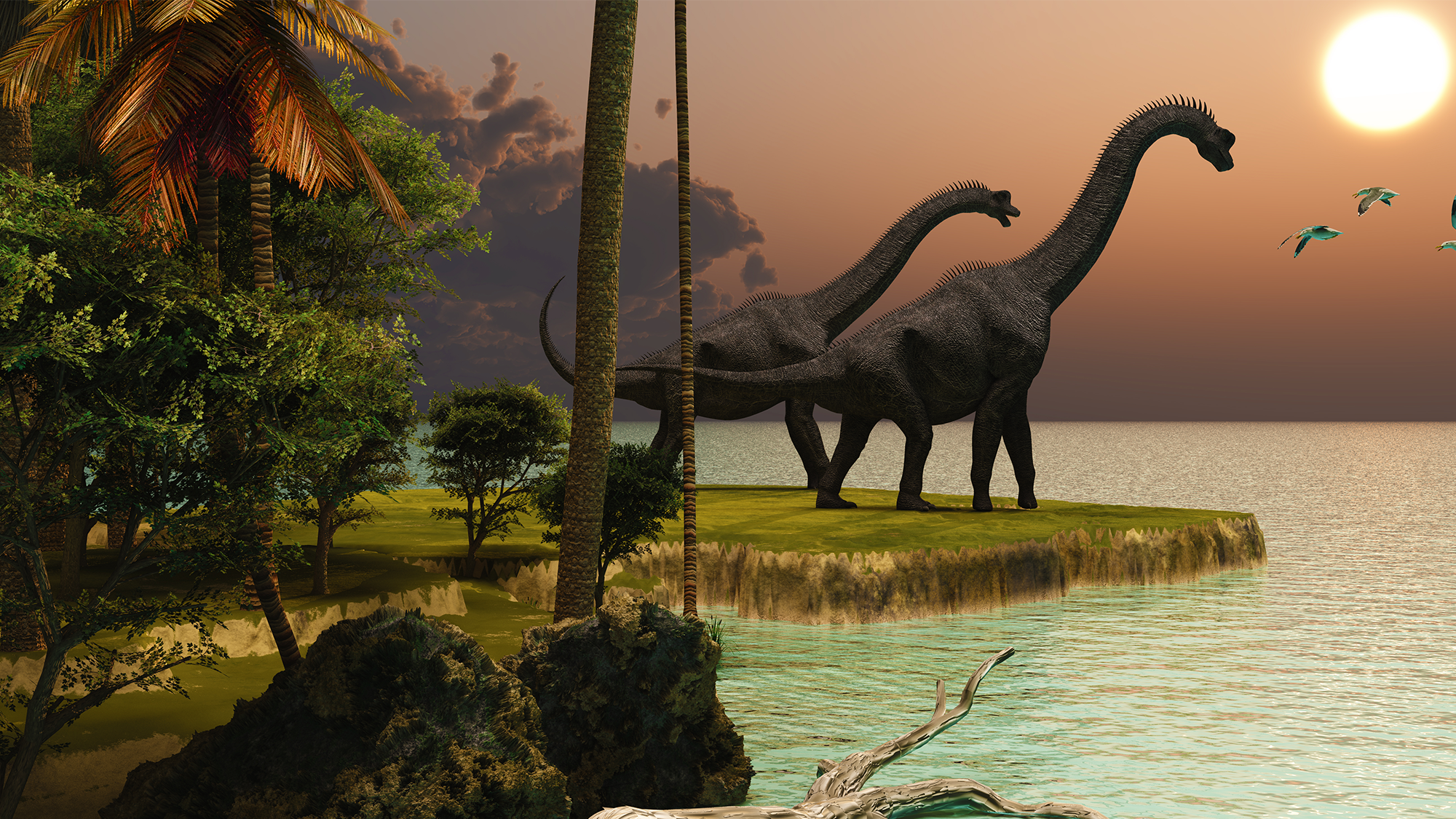

About 252 to 201 million years ago, roughly 76 percent of all marine and land-based species were wiped off the face of the Earth. The Triassic-Jurassic mass extinction is largely believed to be what helped dinosaurs eventually dominate the landscape, but scientists are still understanding how and why. A new study published Friday in the journal Current Biology, suggests that it was climate change and not competition between species that helped them ascend to the top of the food chain.
[Related: After the dinosaurs, Earth became an all-you-can-eat buffet for snakes.]
The sauropod-like dinosaurs that would become the giant herbivore species seen during the Jurassic (such as Diplodocus and Brachiosaurus) thrived and expanded to new territories as the Earth warmed. These dinosaurs are known for their massive bodies with long tails and giraffe-like necks paired with and a small head.
An team of paleontologists from the United Kingdom, Germany, and Brazil compared computer models of global climate conditions, such as rainfall and temperature, with data on the different locations of dinosaurs during this time period. Their work showed how both sauropods and sauropod-like animals were a winner during this turbulent period on Earth.

“What we see in the data suggests that instead of dinosaurs being outcompeted by other large vertebrates, it was variations in climate conditions that were restricting their diversity,” Emma Dunne, study co-author and paleontologist at Friedrich-Alexander University Erlangen-Nürnberg, said in a statement. “But once these conditions changed across the Triassic-Jurassic boundary, they were able to flourish. The results were somewhat surprising, because it turns out that sauropods were really fussy from the get-go: later in their evolution they continue to stay in warmer areas and avoid polar regions.”
[Related: Cushy feet supported sauropods’ gigantic bodies.]
There is still debate among scientists about the direct cause of this extinction event. Some scientists believe that the climate change and sea level rise resulted from a sudden large release of carbon dioxide that occurred when the supercontinent Pangea began to rift, leading to devastating volcanic eruptions. As the land masses that are now now eastern North America and northwestern Africa began to split apart, up to 100,000 gigatons of carbon dioxide may have been released into the atmosphere. This extra carbon dioxide likely strengthened the greenhouse effect around the world, increasing air temperatures by as much as 18-27 °F.
Further research will go into better understanding the effect of climate change after the dinosaurs took over.
“What we want to do next is use the same techniques to understand the role of climate in the next 120 million years of the dinosaur story,” said Richard Butler, a paleontologist at the University of Birmingham, in a statement.